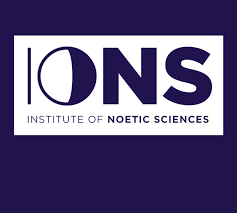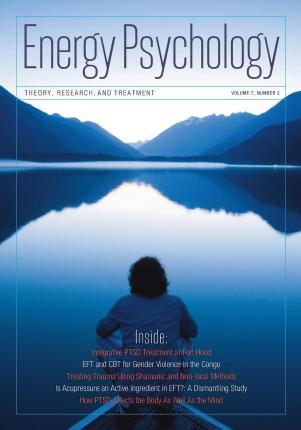Research
Most of the research conducted thus far has been efficacy studies: research to determine the effectiveness of a technique for a specific condition. Speculation regarding the specific mechanisms of action of Energy Psychology modalities has suggested that Energy Psychology techniques work by unblocking ‘energy blockages’ in the acupuncture meridian system; by desensitizing and counter-conditioning traumatic conditioned reactions; and/or by downregulating the fight-or-flight response in the amygdala and hippocampus. It is likely that multiple mechanisms are involved.
Preliminary research suggests that TAT can be effective in treating stress, anxiety, trauma and PTSD, improving self-esteem, and maintaining weight loss.

Randomized trial of two mind-body interventions for weight loss maintenance.
Elder, C., Ritenbaugh, C., et al. (2007). Journal of Complementary and Alternative Medicine, 13(1), 67-78.
This research study on Weight Loss Maintenance was conducted by Dr. Charles Elder and colleagues at Kaiser Permanente in Portland, Oregon. Ninety-two obese adults were recruited to participate in a behavioral weight loss program, and randomized into three groups: a qigong group, a Tapas Acupressure group, and a self-directed support (SDS) group as an attention control. Attendance at sessions was significantly higher for TAT® than for SDS. After 24 weeks, the TAT® group maintained 1.2kg more weight loss than the SDS group did (p=.09), and 2.8 kg more weight loss than the qigong group (p=0.00). A secondary analysis revealed that the participants reporting a previous history of unsuccessful weight loss were more likely to regain weight in the SDS group, but this effect was suppressed in both the qigong and the TAT® groups. This study indicates that TAT® may be an effective adjunct for behavioral weight loss programs.

Randomized trial of Tapas Acupressure Technique for weight loss maintenance.
Elder, C., Gullion, C., DeBar, L. Funk, K., Lindberg, N. et al. (2012). doi: 10.1186/1472-6882-12-19
Participants were 285 obese adults who had completed a six-month behavioral weight-loss program at Kaiser Permanente, an HMO in Portland, Oregon, prior to randomization. Those who successfully lost weight were randomized into either an experimental weight-loss maintenance intervention, Tapas Acupressure Technique® (TAT®), or a control intervention comprised of social-support group meetings (SS) led by professional facilitators. Participants in both maintenance conditions attended eight group sessions over six months of active weight loss maintenance intervention, followed by an additional 6 months of no intervention. The main outcome measure was change in weight from the beginning of the weight loss maintenance intervention to 12 months later.
There was a smaller (but not statistically significant) weight regain (1.72 kg) for TAT® and 2.96 kg weight regain for SS, p < 0.097). Differences between the two groups for secondary outcomes.
Change in depression, stress, insomnia, and quality of life were also not significant. A secondary analysis showed a significant interaction between treatment and initial weight loss (p < .036), showing that greater initial weight loss was associated with more weight regain for the SS group but less weight regain for TAT®.

Adherence to, and satisfaction with, the self-acupressure intervention in the LIFE weight-loss maintenance study.
Elder, C., Debar, L., Funk, K. Vollmer, W. et al. (2013). Med Acupunct. 25(1):43-47.
This research study was conducted by Dr. Charles Elder and colleagues at Kaiser Permanente in Portland, Oregon. The study involved 142 obese participants who had lost at least 10 pounds in a conventional weight loss program, and sought to explore self-reported satisfaction and frequency of TAT® practice. Sixty-six percent of TAT® participants attended at least 6 of 8 practice sessions. More than 80% reported practicing TAT® at home, on average, at least 2 days/week. 62% reported practicing less than 10 minutes per session, while 27% reported practicing 10 – 20 minutes per session. Higher satisfaction scores were significantly correlated with less weight regain (p=0.001). Frequency of TAT® practice was not significantly associated with changes in weight, stress, insomnia, depression, or quality of life. These data suggest moderate acceptance of, and adherence to, the TAT® intervention.

Recommended Resources
What is your ACE score?
ACEs are adverse childhood experiences that harm children’s developing brains and lead to changing how they respond to stress and damaging their immune systems so profoundly that the effects show up decades later. ACEs cause much of our burden of chronic disease, most mental illness, and are at the root of most violence.

What is Noetic Science?
The way we understand ourselves and our world is always evolving. From instinct to intuition to intellect, part of being human is using multiple ways to gather and utilize information. Noetic Sciences is one of many frameworks we can use to engage with our daily reality. A framework that could help explain the unexplainable - and spark transformation.

What is ACEP?
ACEP is recognized as the largest international organization that promotes research and application of Energy Psychology approaches, offering an indispensable network of resources for the public and media, a staunch advocate for members responsibly learning and applying Energy Psychology models, and an influential presence helping shape mental health and healthcare practices.

Using Energy Psychology in Psychotherapy for Trauma.
White, I. C. (2015). It helps me to love my work: An interpretative phenomenological analysis of the senior therapist experience of using Energy Psychology in Psychotherapy for Trauma. Master’s thesis.
This study used Interpretative phenomenological analysis to analyze the experiences of three psychotherapists using EP (Energy Psychology) methods, including TAT®. Interpretative phenomenological analysis (IPA) was applied to the central research question: How does Energy Psychology impact and inform the life and work of experienced psychotherapists who use Energy Psychology in the treatment of trauma?
Four themes emerged: transformation; paradigm shift; state of presence; and spiritual realization. The participants attributed significant changes in their understanding of psychotherapeutic change, personal philosophy, and overall contentment in life to their experience of using energy psychology, leading to the central hypothesis of this study – energy psychology has the potential to catalyze a process of transformation that results in a lived experience of serenity and flourishing. Two new understandings of underlying mechanisms that contribute to the efficacy of energy psychology are theorized: 1) energy psychology shares mechanisms in common with meditative practices that may contribute to positive impacts on autonomic dysregulation; 2) energy psychology provides a manual technique that supports the process known as focusing. Non-specific factors that are common to many forms of psychotherapy also contribute to efficacy.
Energy psychology is a suitable treatment in evidence-based practice for clients presenting with trauma who: 1) do not favour or may experience re-traumatization during exposure or reliving experiences; and 2) are at risk of decompensation due to flooding of traumatic material in the early stages of treatment.

The use of TAT® (Tapas Acupressure Technique®) in reducing stress and increasing self-esteem.
Steel, J. (2015). A self-study using phenomenological theme analysis
Psychotherapist Josette Steel used the TAT® Protocol for Stressful Events for 10 sessions over a period of 3 weeks to explore whether TAT® would be an effective tool for managing stress and increasing feelings of self-worth.
The Sorensen Self-Esteem Test was used as a baseline self-esteem measure and re-issued at the end of the study. A list of 10 free association words were collected before engaging in each treatment, pre and post sessions and at the end of the treatment period.
Quantitative analysis showed an increase in overall sense of self-worth and an increase in positive states post-TAT® sessions compared to the pre-session markers. Negative and positive states varied during the treatment period while self-worth increased, suggesting that TAT® can improve emotional self-regulation when dealing with stressful situations. Quantitative analysis of the free association words generated suggest an increase in feelings of calm and balance, and a decrease in negative self-image. These results suggest that TAT® may be an effective treatment for reducing stress and increasing self-esteem.
Abstract: While there is a great deal of research into various Energy Psychology (EP) methods, the subjective experience of the client has not yet been investigated. In this self-study, the Tapas Acupressure Technique (TAT) Protocol for Stressful Events was used for 10 sessions over a period of 3 weeks to explore whether TAT would be an effective tool for managing stress and increasing feelings of self-worth. The Sorensen Self-Esteem Test was used as a baseline self-esteem pre and post test to measure self-worth and positive and negative emotional states.
A list of 10 free association words was collected before and after each treatment session and at the end of the treatment period. Quantitative analysis showed an increase in overall sense of self-worth and an increase in positive states. Negative and positive states varied throughout the treatment period while self-worth increased, suggesting that TAT enabled increased emotional self-regulation when dealing with stressful situations. Scores on the Sorensen Self-Esteem Test improved by 28% on follow-up. A qualitative analysis of the free association words suggests an increase in feelings of balance and calm and a decrease in negative self-image.

Tapas Fleming
Creator and Founder of TAT®
After many years dedicated to facilitating personal growth, my journey led me to explore the realms of physical and energetic healing. In 1987, I became a Licensed Acupuncturist, focusing my practice on treating allergies.
My quest for a simple and effective treatment method inspired the development of the TAT in 1993. Initially, my goal was to alleviate allergic reactions in my patients. However, I quickly discovered that TAT had a much broader impact: it was gently and easily clearing the effects of past stressful or traumatic experiences.
My mission is to help people find healing and peace, transforming lives one person at a time.
Countries and Counting
